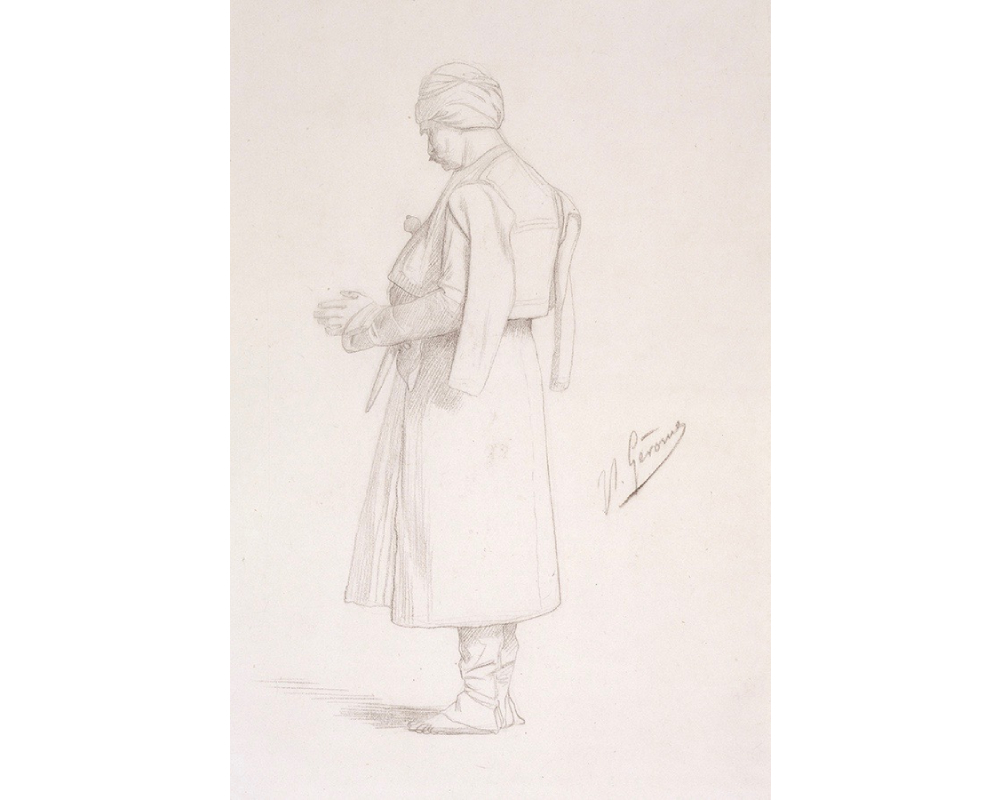
Standing Turk
Guest blogger Aurelia Grant Wingate is a Smith College student, class of 2016, majoring in Psychology. She wrote this post for Islamic Art and Architecture, a course which surveys the architecture, landscape, book arts and luxury objects produced in Islamic contexts from Spain to India, and from the seventh through the twentieth centuries. The Fall 2014 session was taught by Professor Alex Dika Seggerman, the Five College Post-Doc in Islamic Art & Architecture.
The French academic painter Jean-Léon Gérôme is known for his hyper illusionistic style, which he used to create detailed paintings of life and culture in the newly discovered East during the nineteenth century. Gérôme quickly became a popular Orientalist painter, providing Europe with hyper-sexual and exoticized images of “the Oriental”.
Standing Turk is a detailed sketch of a man wearing the uniform of a Turkish military officer. The image was inspired by Gérôme’s travels East. Although the man in the sketch stands as if unaware of the artist, Gérôme is known for recreating images from his travels inside his studio in Paris. This polished sketch was most likely drawn from a European model wearing authentic Turkish garments. The fine detail and focus on the clothing brings a truth to the staged image, and makes the figure identifiable as a foreigner. The turban and saber are additional markers of the man as “Oriental” to a European audience.
This image can not be found replicated exactly in any of Gérôme’s completed oil paintings, however the painting Young Greeks at the Mosque depicts a man wearing similar styled clothing, and standing in a similar stance as the Standing Turk. Not all of Gérôme’s sketches were turned into finished artworks, but Standing Turk could have been a figure drawing later adapted for this painting.